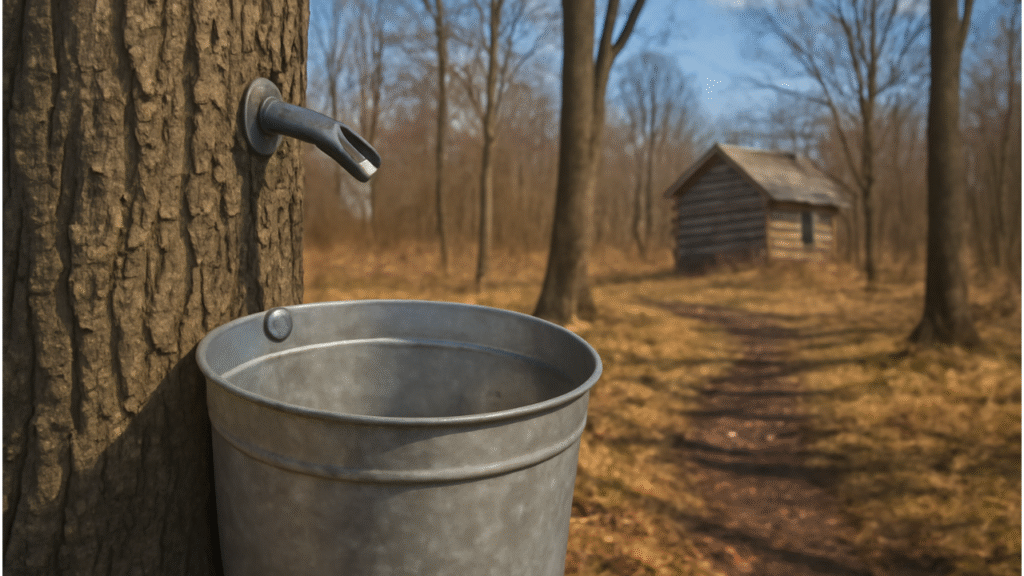
Can You Tap Hickory Trees for Syrup? A Complete Guide to Harvesting and Making Hickory Syrup
Have you ever wondered if you can tap hickory trees for syrup? 🌳 While maple syrup often steals the spotlight, hickory syrup is an increasingly popular alternative for its unique smoky-sweet flavor. Whether you’re a DIY enthusiast, a lover of homemade products, or just curious about tapping trees for syrup, this guide is here to help!
In this article, we’ll walk you through the step-by-step process of harvesting sap from hickory trees and turning it into delicious syrup. You’ll discover how to identify the right trees, tap them effectively, and make syrup that adds a special touch to your recipes. Plus, we’ll cover common challenges and how to troubleshoot them, so you can feel confident in your syrup-making journey.

Ready to dive into the world of hickory syrup? Keep reading to unlock the secrets of this sweet, smoky treat! 🥄✨
Table of Contents
Toggle🍯🌳 What Is Hickory Syrup? 🌳🍯
Hickory syrup 🍯 is a sweet, smoky syrup 🌿 made from the sap of hickory trees 🌳. While it’s less common than maple syrup 🍁, it’s a delicious alternative that offers a unique flavor profile 🌟. Unlike the light and delicate taste of maple syrup 🍁, hickory syrup 🍯 has a richer, deeper taste with subtle smoky notes 🔥, making it perfect for both sweet 🍰 and savory dishes 🍖.
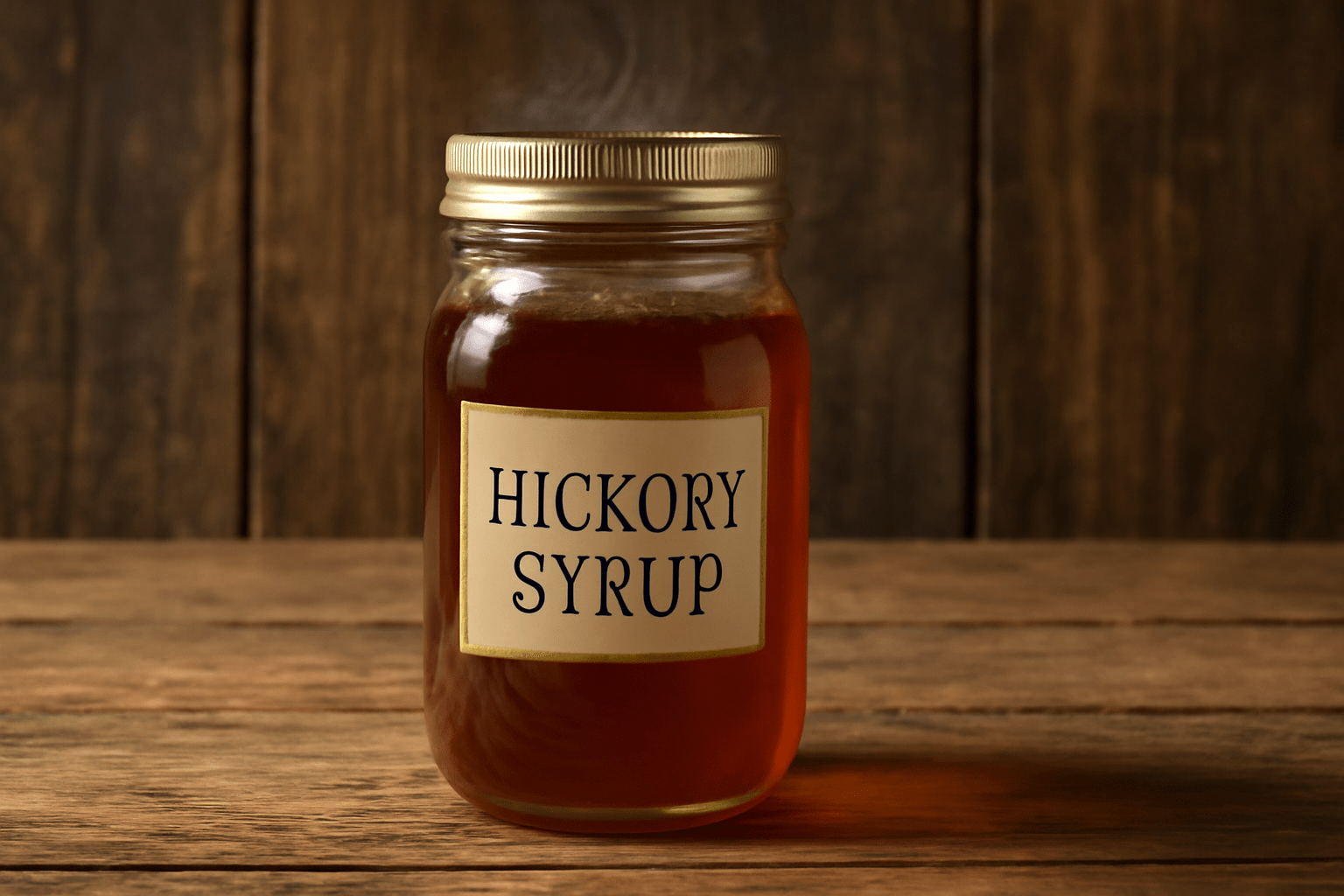
How is Hickory Syrup Made? 🔧
Just like maple syrup 🍁, hickory syrup 🍯 is made by tapping hickory trees 🌳 and collecting their sap 💧. The sap is then boiled down 🔥 to concentrate the sugars 🍬, turning it into syrup 🍯. However, because hickory trees 🌳 produce less sap than maples 🍁, it takes a bit more time ⏰ and effort 🛠️ to make hickory syrup. But the payoff is worth it! 🎉
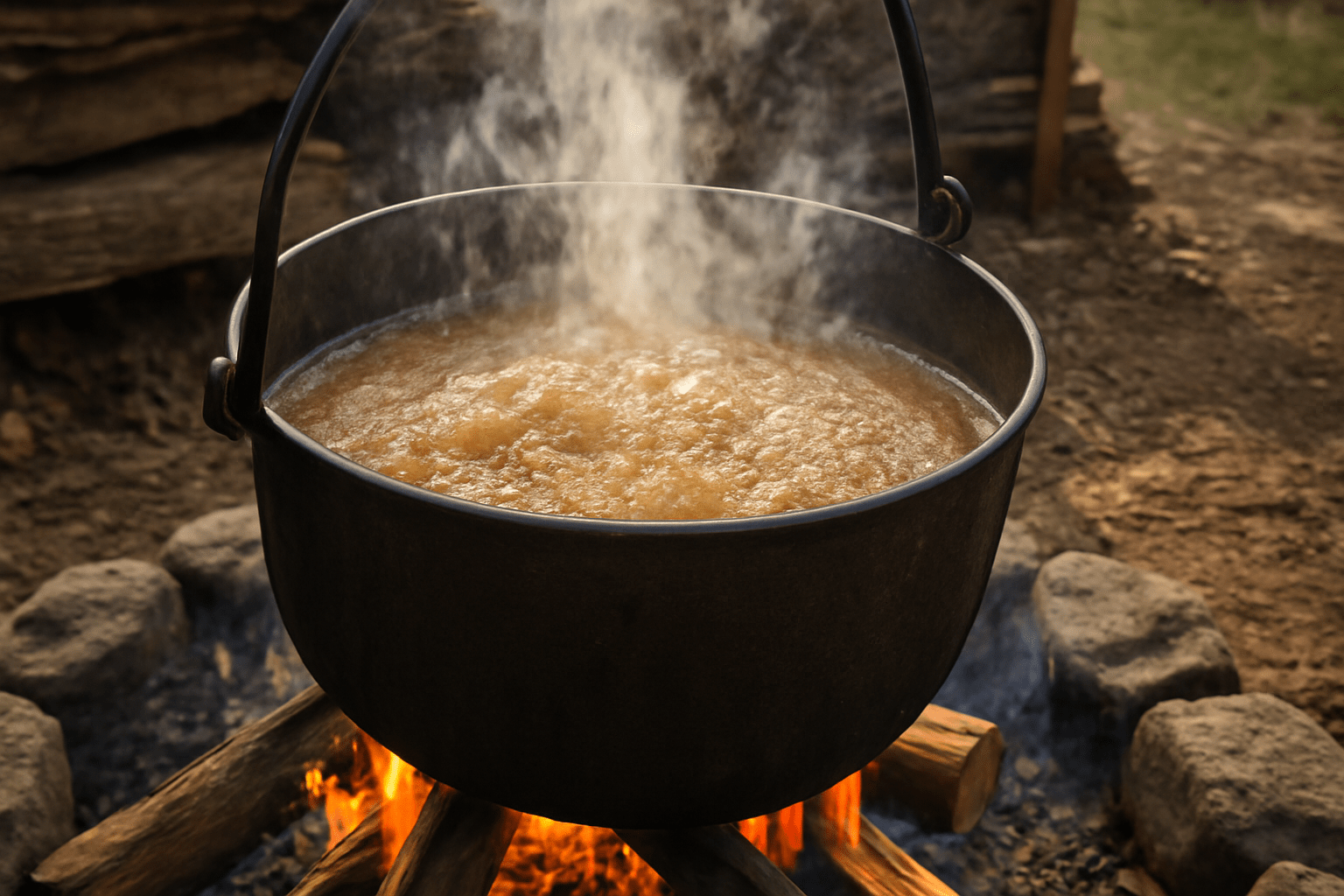
Why Try Hickory Syrup? 😋
🌟 Unique Flavor 🌟
If you’re looking for something beyond traditional maple syrup 🍁, hickory syrup 🍯 adds a smoky depth 🔥 that can elevate your recipes 🍴.
🍴 Versatility 🍴
Use it on pancakes 🥞, in baking 🧁, as a glaze for meats 🍗, or even stirred into cocktails 🍸. Its complex flavor profile makes it a versatile pantry staple 🏡.
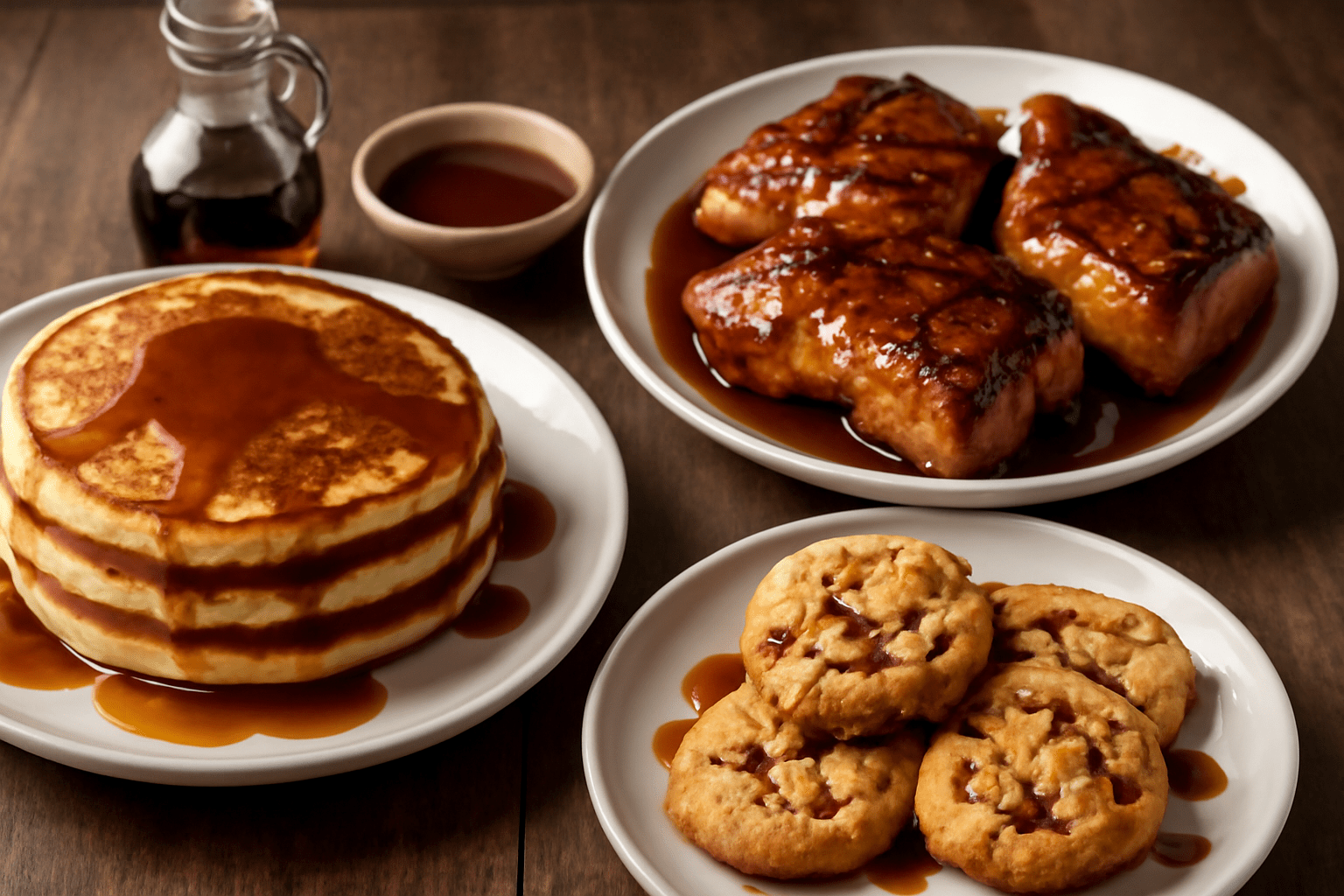
🛠️ Natural and Homemade 🛠️
Making your own hickory syrup 🍯 can be a fun, sustainable DIY project 🧑🔧. Plus, it’s a great way to tap into your inner artisan 🧑🎨!
Whether you’re a seasoned syrup maker 🧑🍳 or a curious beginner 🧑🔬, hickory syrup 🍯 is a fantastic option to try. Ready to learn how to tap hickory trees 🌳 and make your own syrup 🍯? Keep reading! 😋
🌳💧 Is Tapping Hickory Trees for Syrup Feasible? 💧🌳
When it comes to tapping trees 🌳 for syrup 🍯, hickory trees 🌳 are a less common choice compared to maple trees 🍁. While it is certainly possible to tap hickory trees 🌳 for syrup 🍯, several key considerations 💡 make this process different—and more challenging—than tapping maples 🍁. Let’s take a closer look! 😊
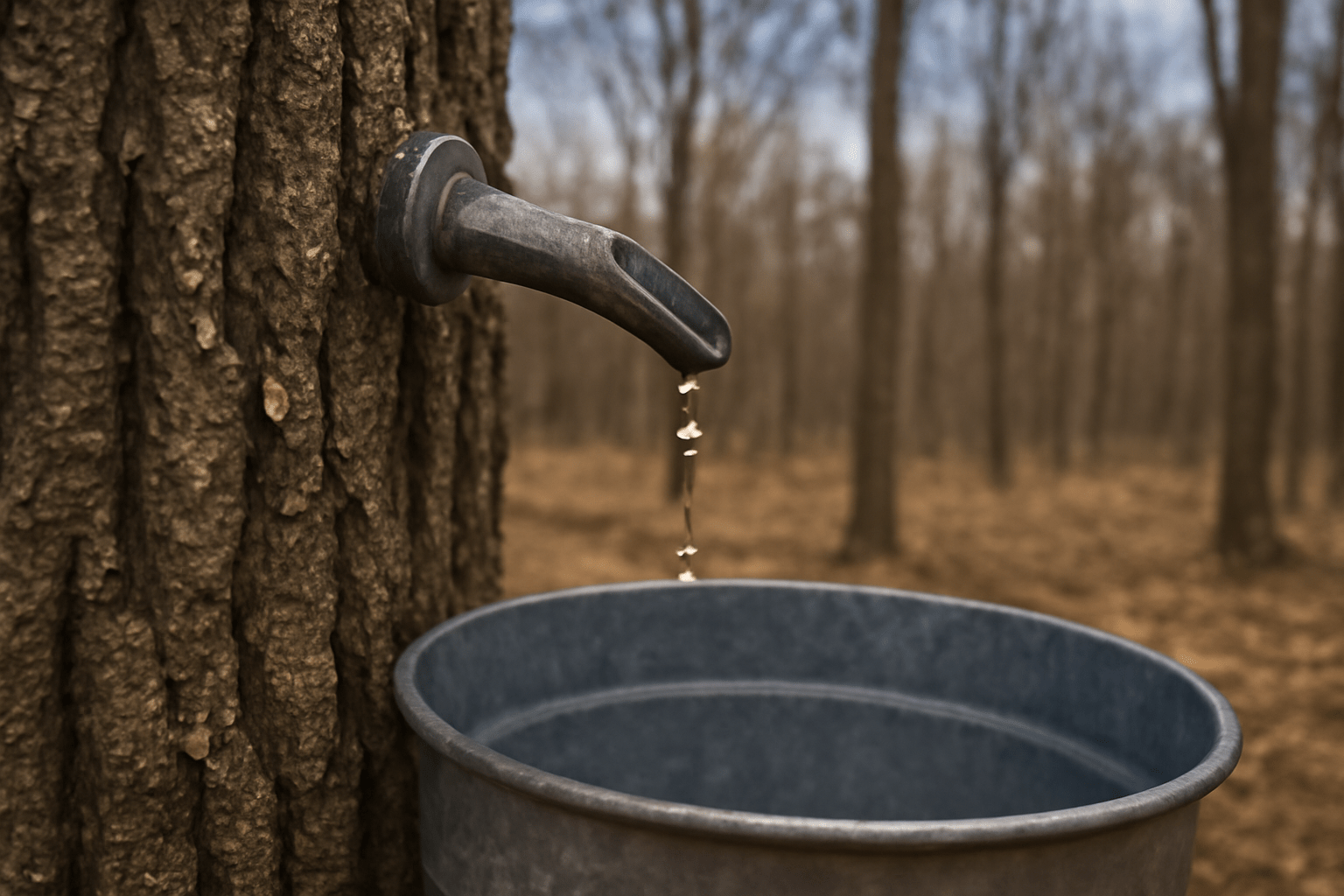
Key Considerations
🍁 Hickory Tree Sap vs. Maple Sap: Differences and Challenges 🍁
The first major difference between hickory 🌳 and maple 🍁 trees is the sap 💧 itself. Maple 🍁 trees are widely known for producing large quantities of sap 💧 with a consistent sugar content 🍬, making the syrup production process relatively straightforward 🎉. In contrast, hickory sap 💧 is much less abundant and can vary in its sugar content 🍯, meaning it takes more sap 💧 to produce a smaller quantity of syrup 🍯.
- Maple Sap: Consistent and high in sugar 🍬, making it ideal for syrup production 🍯.
- Hickory Sap: Less abundant, more variable in quality 🔄, and requires more work 💪 to collect enough for syrup 🍯.
This difference in sap production means you may need to tap more hickory trees 🌳 or work harder to gather enough sap 💧 to make syrup 🍯.
Why Hickory Trees Aren’t as Commonly Tapped as Maples 🍁
There are a few reasons why hickory trees 🌳 aren’t tapped as often as maples 🍁:
- Lower Sap Yield: Hickory trees 🌳 produce significantly less sap 💧 than maples 🍁, which can be discouraging for large-scale syrup production 🏭.
- Inconsistent Sap Flow: Hickory sap 💧 flow isn’t as predictable as maple sap 🍁. It tends to flow best when temperatures fluctuate between freezing ❄️ at night and warming up 🌞 during the day. Inconsistent weather 🌧️ can affect the timing of your sap collection 💧.
- Labor-Intensive Process: Due to the lower sap yield 🌳 and variability in sap quality 💧, making hickory syrup 🍯 can be a time-consuming 🕰️ and labor-intensive 🛠️ process 🍃.
Seasonal and Environmental Factors That Affect Sap Collection 🌿
Hickory trees 🌳 typically begin to “run” (produce sap 💧) in late winter ❄️ to early spring 🌸, much like maple trees 🍁. However, there are some unique challenges with hickory sap 💧 collection:
- Temperature Fluctuations: Sap 💧 flows best when there’s a mix of freezing ❄️ nights and thawing 🌞 days, but this can be less predictable for hickory trees 🌳.
- Tree Health and Environment: Healthy 🌳, mature hickory trees 🌳 are essential for tapping, and environmental factors like drought 🌵 or disease 🦠 can affect sap production 💧.
While you can tap hickory trees 🌳 during the same season as maple trees 🍁, it’s crucial to monitor weather patterns 🌧️ closely and be ready for a shorter or less consistent sap 💧 collection period ⏳.
Advantages of Tapping Hickory Trees 🌳
Despite the challenges ❄️, there are several benefits 🌿 to tapping hickory trees 🌳 for syrup 🍯 that make the effort worth it! 🌟
Unique Flavor for Diverse Uses 🍴
Hickory syrup 🍯 has a distinctive smoky flavor 🔥 that sets it apart from maple syrup 🍁. This makes it a perfect addition to:
- Baking 🍰: Add hickory syrup 🍯 to baked goods 🍪 like cakes 🎂, cookies 🍪, and pastries 🥐 for a rich, smoky-sweet twist 🔥.
- Cooking 🍳: Use hickory syrup 🍯 as a glaze for meats 🍖, roasted vegetables 🥦, or even drizzled over pancakes 🥞 and waffles 🧇.
- Sweetener 🍯: Substitute hickory syrup 🍯 in place of traditional sweeteners 🍬 for a more complex, smoky sweetness in coffee ☕, tea 🍵, or cocktails 🍸.
A Potential Niche Market for Artisanal Hickory Syrup 🍯
As more people seek out unique 🦄, homemade products 🏡, artisanal hickory syrup 🍯 is becoming a niche market worth exploring 🌍. Whether you’re making it for personal use 🍯 or selling at local markets 🏪, hickory syrup’s unique flavor 🔥 and craftsmanship appeal to customers 🛍️ who are looking for something beyond the typical maple syrup 🍁. 🏷️🍯
Tapping hickory trees 🌳 for syrup 🍯 is feasible, though it requires a little more effort 💪 and patience ⏳ compared to tapping maples 🍁. However, the unique smoky flavor 🔥 and artisan appeal 🛠️ of hickory syrup 🍯 make it a rewarding endeavor for anyone willing to put in the time ⏰. Ready to tap your own hickory tree 🌳? In the next section, we’ll show you how to identify the best trees 🌳 for syrup tapping! 🌳✨
🌳✨ Types of Hickory Trees You Can Tap ✨🌳
When tapping hickory trees for syrup, it’s important to know which species are the best candidates. While not as common as maple trees for syrup production, hickory trees can yield a delicious and unique syrup that adds depth and flavor to your cooking. Here’s a quick breakdown of the most popular hickory tree species you can tap. 👇
🌟
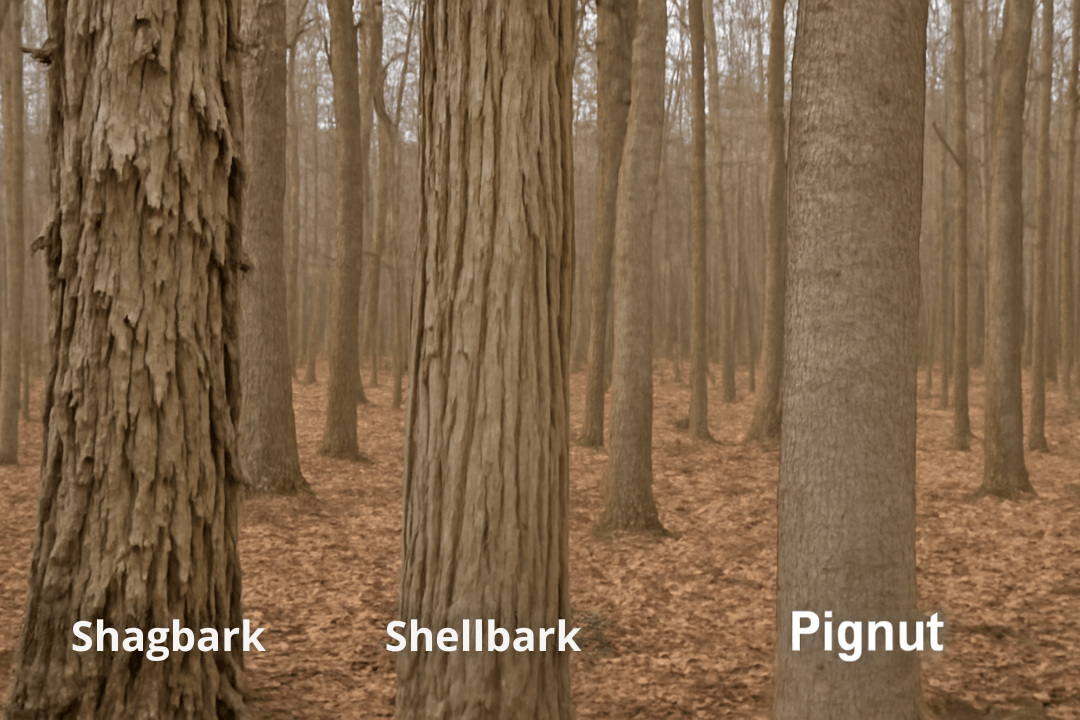
🌰 1. Shagbark Hickory 🌰
Best for Syrup Making: This is the most common and widely used hickory species for syrup production. 🏆🍁
Characteristics: Shagbark hickory trees have distinctive, peeling bark that looks “shaggy”—hence the name! Their leaves are compound with 5–7 leaflets 🍃, and they usually grow in hardwood forests 🌳 across the Eastern U.S.
Sap Yield: This tree produces a decent amount of sap 💧, making it a popular choice for hobbyists and syrup enthusiasts. It can yield up to 1-2 gallons of sap per day in peak season. 🌞
Flavor Profile: The syrup made from shagbark hickory is often described as having a rich, nutty flavor with a slight smokiness 🍂🔥, offering a unique twist compared to maple syrup. 🌰🍯
Why Choose Shagbark?
- Abundant and easy to identify 👀
- Produces high-quality syrup with a great balance of sweetness 🍬 and smokiness 🌰
🌳 2. Shellbark Hickory 🌳
Another Great Option: Shellbark hickory is very similar to shagbark, but less common. It’s also excellent for syrup production. 🌟💧
Characteristics: Shellbark hickory has larger leaves 🍃, and the bark tends to peel in long, smooth strips 🌿. These trees are found in the Eastern U.S. as well, typically in bottomland areas 🌾.
Sap Yield: Shellbark hickory trees can produce sap in similar quantities to shagbark hickory, but they are a bit rarer in the wild 🌍.
Flavor Profile: The syrup is quite similar to shagbark, with a nutty, mild smokiness 🍂. Some say it’s a little sweeter 🍬✨.
Why Choose Shellbark?
- Provides syrup with a slightly sweeter taste 🍯, which some might prefer.
- Less common but still a fantastic option if you have access to them 🌳🔍
🌰 3. Pignut Hickory 🌰
A Less Common Choice: Pignut hickory isn’t as popular for syrup making, but it’s still a viable option if you’re up for a bit of a challenge 💪.
Characteristics: The pignut hickory has smooth, grayish bark 🌚 and smaller nuts 🌰 compared to other hickory species. It’s more often found in upland forests 🌲 and prefers well-drained soils 🌾.
Sap Yield: The sap yield from pignut hickory trees is generally lower than from shagbark or shellbark 🌿. It may take more effort 💼 to get the same quantity of sap.
Flavor Profile: The syrup from pignut hickory tends to be less sweet 🍬 and more intense 🔥, with a strong, earthy flavor 🌍. Some syrup-makers love the distinctive taste!
Why Choose Pignut?
- Good for those who want to try a different, earthier flavor 🌍.
- Requires more work for sap collection, but worth it for the unique taste! ✨
🌳 How to Identify Hickory Trees for Tapping 🧐
Not sure how to tell these hickory species apart? Here’s a quick guide to identifying hickory trees before you tap:
- Bark: Look for shaggy bark on shagbark hickory 🪶 and long, smooth strips on shellbark 🌿. Pignut hickory has smoother, lighter bark 🌫️.
- Leaves: All hickory trees have compound leaves 🍃 (multiple leaflets), but the number of leaflets can vary. Shagbark hickory usually has 5–7 leaflets, while shellbark may have larger ones 🍁.
- Nuts: If you see hickory nuts 🌰, that’s another good sign! Shagbark and shellbark trees produce large, edible nuts, while pignut hickory’s nuts are smaller.
🌿 Which Hickory Tree Is Best for You? 🌿
If you’re new to syrup-making, shagbark hickory is your best bet for an easy and rewarding experience 🌱. Its abundant sap 💧 and mild, nutty syrup flavor 🍯 make it the top choice for most hobbyists.
Shellbark hickory can offer a slightly sweeter syrup 🍬, while pignut hickory provides a more intense flavor 🔥, perfect for those looking to experiment 🌍.
No matter which type you choose, tapping hickory trees is a fun and rewarding project 🎉 that allows you to enjoy a unique, homemade syrup 🥞.
By knowing which hickory species to tap, you’ll be on your way to creating some amazing syrup 🍯 that’ll impress your friends and family 👨👩👧👦. Happy tapping! 😊
🌳✨ The Basics of Tapping Hickory Trees ✨🌳
Tapping hickory trees is a fun and rewarding process, but it does require some basic knowledge and the right tools. Whether you’re a beginner or looking to improve your syrup-making skills, this section will walk you through the essentials of tapping hickory trees, step by step. Let’s get started! 👇
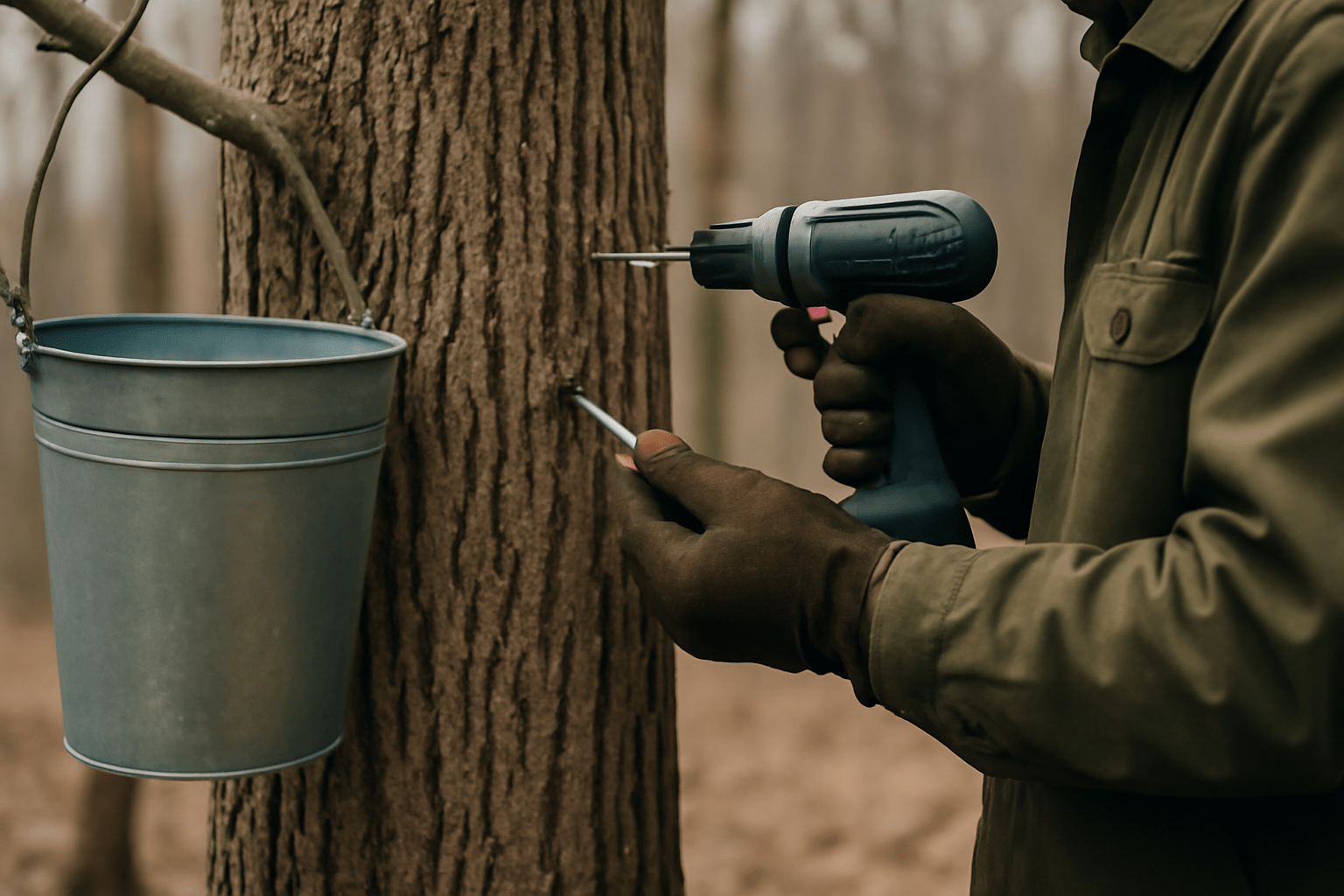
🛠️ Tools You’ll Need for Tapping Hickory Trees 🛠️
Before you head out to tap your hickory trees, make sure you have the right equipment. Here’s what you’ll need:
- Drill & Drill Bit: A drill with a 5/16” drill bit is the standard size for tapping. This ensures the hole is big enough to allow the sap to flow but not so large that the tree gets damaged. 🔩
- Spiles: These are the metal or plastic taps that you insert into the hole to direct the sap into your collection container. 🍶
- Collection Containers: Buckets with lids or sap bags are perfect for collecting the sap. Make sure they’re clean and large enough to catch the sap without overflowing. 🧴
- Hammer or Mallet: A rubber mallet or small hammer is ideal for gently tapping the spile into the tree without damaging the bark. 🛠️
- Towels or Cheesecloth: These can be used for filtering sap if necessary, to remove any dirt or debris that might get into your collection container. 🧼
🌞 When is the Best Time to Tap Hickory Trees? 🌞
Timing is everything! Hickory sap flows during late winter to early spring, usually between February and April. Here’s what you need to know about the perfect conditions for tapping:
- Temperature: During the tapping season, you’ll want daytime temperatures to be above freezing (32°F or 0°C), with nighttime temperatures dipping below freezing. This freezing-and-thawing cycle creates pressure inside the tree, which encourages sap to flow. 🌡️
- Tree Maturity: It’s important to tap mature hickory trees that are at least 10 inches in diameter. Smaller trees won’t have enough sap to make tapping worthwhile, and tapping them can harm their health. 🌳
🔨 Step-by-Step Guide to Tapping a Hickory Tree 🔨
Now that you have your tools and know when to tap, it’s time to start the tapping process. Here’s a simple, step-by-step guide to tapping your hickory trees like a pro. 👇
- Choose Your Tree:
Select a healthy, mature hickory tree (over 10 inches in diameter). Look for trees with no visible disease or damage.
Make sure the tree is in a spot where it will get enough sunlight ☀️ and air circulation to promote healthy sap flow 🌬️. - Drill the Hole:
Use a drill with a 5/16” bit to drill a hole 2-3 feet above the ground.
Drill at a slight upward angle (about 15-20°) to help the sap flow out easily.
Make the hole 1.5-2 inches deep — not too deep, or you could damage the tree’s vascular tissue. 🔩🌳 - Insert the Spile:
Once the hole is drilled, gently tap the spile into the hole with a mallet. It should fit snugly, but don’t hit it too hard to avoid splitting the bark.
If you’re using a bucket, hang it on the spile’s hook or use a sap bag for easier collection. 🍶 - Attach the Collection Container:
Attach your bucket or bag to the spile to start collecting sap. Make sure your container is secure and has a lid to keep debris out of the sap. 🧴
Check your containers daily to ensure they don’t overflow as the sap begins to drip out. 🌿 - Wait for Sap Flow:
After your spile is in place, you’ll begin seeing sap drip from the spile. Hickory sap isn’t as plentiful as maple sap, but it should still flow consistently once the right temperatures hit.
Keep an eye on the sap collection. You can expect 1-2 gallons of sap per tree per day at the peak of the tapping season. 🌞🍯
🌱 Tips for Successful Tapping 🌱
- Tap Multiple Trees: To get a good amount of sap, it’s best to tap multiple trees 🌳, especially since hickory sap flow tends to be slower than maple 🌿.
- Use Clean Containers: Always clean your buckets and spiles before use to avoid contamination and preserve the quality of your syrup. 🍯
- Check for Flow Daily: Sap flow may slow or stop depending on weather conditions 🌡️. If it’s a warm spell, the sap might not flow, so be patient. 🕰️
- Consider Tree Health: Avoid tapping the same tree year after year, as it could stress the tree over time. Rotate your tapping efforts to maintain the health of your trees 🌳.
🏁 How Do You Tap a Hickory Tree for Syrup? 🏁
To tap a hickory tree, drill a hole about 2-3 feet above the ground using a 5/16” drill bit. Insert a spile into the hole and attach a bucket or sap bag to collect the sap. Tap the tree during late winter to early spring, when temperatures are above freezing during the day and below freezing at night. 🌞🌙
Tapping hickory trees may seem complicated at first, but once you have the right tools and knowledge, it’s an incredibly rewarding process. By following these basic steps, you can collect sap from hickory trees and start making your own delicious syrup 🍯. The key is patience, proper technique, and good timing ⏰.
Happy tapping! 🌿
🍯✨ How to Harvest and Store Hickory Sap ✨🍯
Now that you’ve successfully tapped your hickory trees, it’s time to harvest and store the sap. Since hickory sap flows at a slower rate than maple, it requires a little more attention to detail. Here’s everything you need to know to ensure you get the most out of your sap collection process and keep it fresh until you’re ready to boil it down into syrup. 🥄👇
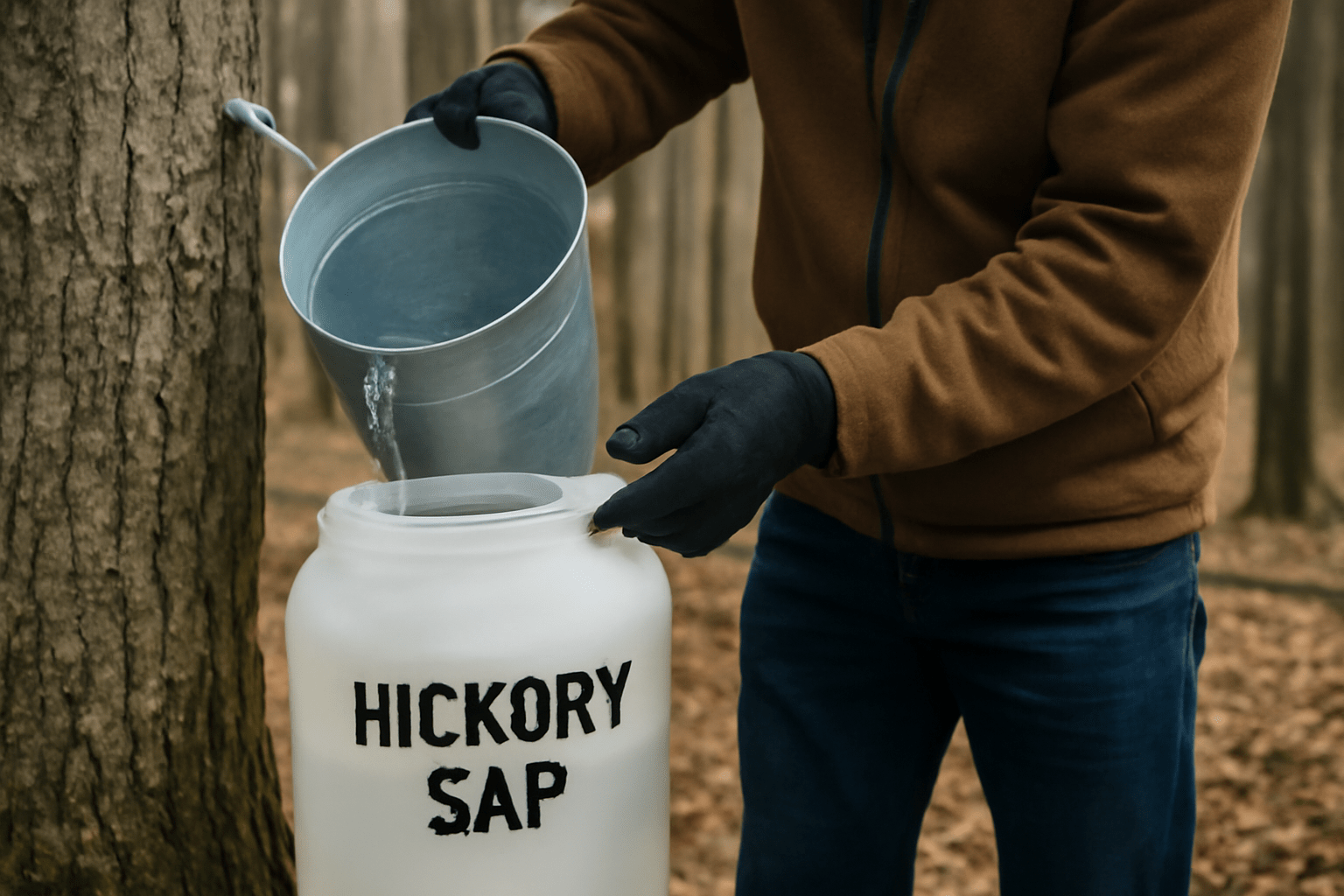
💧 Harvesting Hickory Sap: The Basics 💧
Hickory sap doesn’t flow as quickly as maple sap, but with a little patience, you can still collect plenty for syrup-making. Here’s what to expect:
- Sap Flow Rate: 🍁 On average, you’ll get 1 to 2 gallons of sap per day per tree. This is slower than maple, but it can add up over time if you’re tapping several trees. 🌿
- Collection Timeframe: 🌸 Typically, sap flows during the early spring, from February to April, but you’ll need to keep an eye on the weather. The flow is best when temperatures are above freezing during the day and below freezing at night. 🌡️
🌿 How to Monitor Sap Flow 🌿
- Check Daily: 👀 Sap flow isn’t constant and can vary based on temperature and other environmental factors. You’ll need to check your collection containers every 1-2 days to make sure they don’t overflow. The sap will drip steadily when conditions are right. 💧
- Look for Signs of Full Containers: 🛑 Once your collection container is filled, empty it into a larger storage container (like a food-safe barrel or jug) to keep the process going. 🏺
- Keep it Clean: 🧼 Make sure your collection containers are clean and free from dirt or debris. The sap is clear and sweet, and you don’t want anything to compromise its quality! 🌿
🧊 Storing Hickory Sap: Keep It Fresh 🧊
Fresh sap can spoil quickly, so proper storage is crucial to preserving its quality until you’re ready to boil it down into syrup. Here are some important tips for keeping your sap fresh:
- Keep It Cool: ❄️ Sap is perishable, so you need to store it in a cool place. If you’re not boiling the sap right away, keep it refrigerated or in a cool basement to slow down the fermentation process. A refrigerator works best for short-term storage. 🧊
- Avoid Heat: 🌞 Sap should never be left in direct sunlight or warm temperatures for long periods. Warm sap encourages the growth of bacteria and can affect the flavor of your syrup, so be sure to keep it in a cool, dark place until you’re ready to boil it down. 🧊
- Use Food-Grade Containers: 🍽️ If you’re storing large amounts of sap, make sure you’re using food-safe plastic containers or barrels. These help keep the sap from absorbing unwanted smells or chemicals. Large, clean plastic or stainless steel containers work well. 🛢️
- Sap Shelf Life: 🕐 Fresh sap should ideally be used within 3 to 5 days after collecting it. If you can’t boil it all right away, the sap may begin to sour, leading to a less-than-optimal syrup flavor. If you’re not able to use all the sap immediately, consider freezing it for later use! ❄️
📦 Freezing Hickory Sap for Later Use 📦
If you find yourself with more sap than you can handle, freezing is a great option! Freezing doesn’t affect the flavor or quality of the sap, and it makes it easier to boil down in batches later.
- How to Freeze Sap: 🧊 Simply pour the sap into plastic jugs, freezer bags, or ice cube trays. Leave some space for expansion as the liquid freezes. Label your containers with the date so you can use the oldest sap first. 🧴
- How to Thaw Sap: 🌬️ Thaw frozen sap in the refrigerator or in a cool, shaded area. Once thawed, you can proceed with boiling it down into syrup. Just keep in mind, sap that has been frozen should be boiled as soon as possible once thawed. 🔥
🧼 Preventing Contamination in Your Sap 🧼
Sap is clear and clean when it flows from the tree, but it can easily pick up contaminants from the environment. Here’s how to keep it as pure as possible:
- Cover Your Containers: 🛑 Keep your sap containers covered to prevent dirt, leaves, and insects from contaminating the sap. A simple lid or cloth can do the trick. 🌿
- Clean Your Tools: 🧽 Before using spiles, buckets, or anything else in contact with sap, ensure that they are thoroughly cleaned. Use hot water and soap to wash your tools regularly. 🔧
🏁 How Do You Harvest and Store Hickory Sap? 🏁
To harvest hickory sap, set up collection containers like buckets or sap bags on tapped trees, checking them daily for overflow. Store the sap in a cool place, such as a refrigerator, and use it within 3-5 days to avoid spoilage. If necessary, freeze the sap for longer storage. ❄️
🌳 Harvesting and Storing Hickory Sap 🌳
Collecting and storing hickory sap is a delicate process that requires a bit of care, but the results are well worth the effort! By monitoring your sap flow, keeping it cool, and storing it properly, you can ensure that it stays fresh and ready for boiling. Whether you’re making syrup immediately or freezing sap for later, following these tips will help you maximize your harvest and enjoy that rich, hickory flavor all year round. 🍯🌿
Happy harvesting! 😄
🍯✨ Boiling Down Hickory Sap into Syrup ✨🍯
After all the hard work of tapping and collecting your hickory sap, it’s time for the most exciting part of the process: boiling it down into syrup! This is where the magic happens. The transformation from watery sap to thick, golden syrup requires patience and the right technique. Let’s dive into the step-by-step guide for turning your sap into delicious hickory syrup. 🥄👇
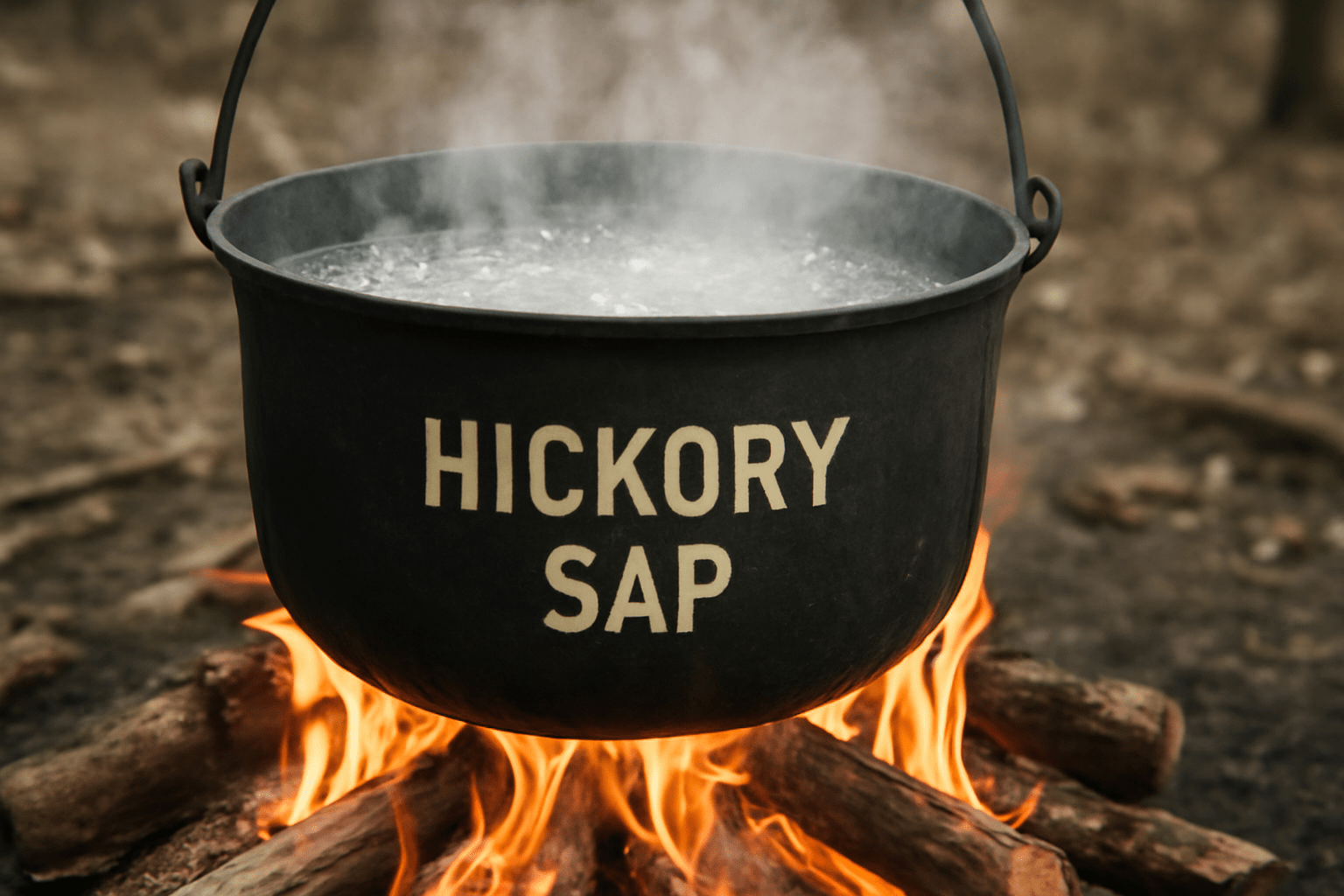
🔥 The Boiling Process: What You Need to Know 🔥
Boiling sap is a labor of love that requires time, the right equipment, and a little know-how. Hickory sap has a lower sugar content than maple, so it will take more sap to produce the same amount of syrup.
- Sugar Content: 🍯 Hickory sap typically has around 1–2% sugar content (compared to maple’s 2–3%). This means you’ll need more sap to get a bottle of syrup. 🥞
- Boiling Time: ⏳ On average, you’ll need about 40–50 gallons of sap to make 1 gallon of syrup. This can vary, depending on sap sugar content and how concentrated you want the syrup. 🕒
🔧 Equipment You’ll Need 🔧
To make the process smoother, here’s a list of essential tools:
- Large Boiling Pot: 🍲 You’ll need a large pot or boiling pan. Stainless steel is ideal, as it resists corrosion and doesn’t affect the flavor of the sap. 🧑🍳
- Outdoor Setup (Optional): 🌞🔥 If you’re boiling large quantities, it’s best to set up outdoors with a propane burner or outdoor stove. Boiling sap indoors can create a lot of steam and make your kitchen extremely humid. 🌬️
- Thermometer: 🌡️ A candy thermometer or food-grade thermometer is essential to track the temperature of your sap. The syrup is ready when it reaches 7.1°F above the boiling point of water (around 219°F or 104°C, depending on altitude). 🌡️
- Strainer: 🧼 Use a fine-mesh strainer or cheesecloth to filter out any debris, ash, or particles from your sap as it boils.
- Syrup Storage Jars: 🏺 Have sterilized glass jars or bottles ready for storing your syrup once it’s done. Make sure the containers are heated to prevent cracking when hot syrup is poured into them. 🌿
🥄 Step-by-Step Guide to Boiling Down Hickory Sap 🥄
Start the Boil:
- Pour Your Sap: 🧑🍳 Pour your sap into your large boiling pot. If you’re boiling a large amount of sap, it’s best to do it in batches, starting with a smaller amount to avoid overwhelming your equipment. 🍶
- Set Your Pot: 🔥 Set your pot over your heat source, whether it’s an indoor stovetop or outdoor burner.
Bring to a Boil:
- Turn up the Heat: 🔥 Turn up the heat to bring the sap to a boil. Keep an eye on the sap as it heats up—it will foam and bubble, so you may need to skim off the foam periodically. Don’t leave it unattended! 👀
- Boil the Sap: 💨 Boil the sap until it starts to thicken, and the water content begins to evaporate. This may take several hours depending on the amount of sap.
Maintain a Low Boil:
- Lower the Heat: 🔥 Once the sap has reduced in volume, lower the heat to a gentle simmer. You want to maintain a consistent boil without the sap boiling over. 🌿
- Patience is Key: ⏳ Keep an eye on the temperature. As the sap nears syrup consistency, it will take longer to reduce, so be patient. This is where the magic really happens! ✨
Use a Thermometer:
- Watch the Temperature: 🌡️ Keep a close watch on the temperature using your candy thermometer. When the sap reaches 7.1°F above the boiling point of water (typically around 219°F or 104°C at sea level), it’s time to stop boiling. This is when your sap has reached syrup consistency. 🥞
- Testing: 🍽️ You can also test by dripping a small amount of syrup onto a cold plate. If it thickens as it cools and forms a syrup-like consistency, it’s ready. ✅
Filter the Syrup:
- Strain it Smooth: 🧼 Once the sap has reached syrup consistency, strain it through a fine-mesh strainer or cheesecloth to remove any remaining particles, like sugar sand or debris that might have formed during the boiling process.
- Smooth & Pure: 💧 This step helps ensure your syrup is smooth and free from impurities.
Final Bottling:
- Pour and Seal: 🏺 Pour your freshly boiled syrup into pre-warmed sterilized jars. Seal the jars while they’re still hot to ensure proper storage. Make sure to leave a little room at the top of each jar. 🌿
- Cool & Store: ❄️ Once the jars cool down, store them in a cool, dark place. If you’ve sealed them properly, your hickory syrup can last for up to a year. 🍯
🔥 Important Tips for Boiling Down Hickory Sap 🔥
- Be Patient: 🕒 The boiling process can take hours, especially with hickory sap. Stay close to the pot and monitor the temperature. If you’re boiling large batches, this may take several days.
- Avoid Overboiling: 🚫 Don’t let your sap boil for too long after it’s reached syrup consistency. Overboiling can make the syrup too thick or lead to burnt flavors. 🔥
- Outdoor Boiling: 🌬️ If you’re boiling outdoors, ensure there’s good ventilation to handle the steam. A well-ventilated space helps prevent moisture buildup. 🌞
🏁 How Do You Boil Hickory Sap into Syrup? 🏁
To boil hickory sap into syrup, bring the sap to a boil, then reduce the heat to a simmer. Use a thermometer to monitor the temperature, and stop when the sap reaches 7.1°F above the boiling point of water (around 219°F or 104°C). Strain the syrup to remove impurities, then bottle it in sterilized jars. 🥄
🌳 Boiling Down Hickory Sap Into Syrup 🌳
Turning hickory sap into syrup is an incredibly satisfying process, but it does take time and patience. From gathering your sap to the final boiling steps, each part of the process contributes to the final, sweet result. While it may take more sap and longer boiling times than maple, the rich, nutty flavor of hickory syrup is truly worth it. 🍯
Now that you know how to turn your sap into syrup, it’s time to enjoy your homemade hickory syrup in all sorts of delicious recipes—from pancakes to marinades. Happy syrup-making! 😄
🍯✨ How to Store and Use Hickory Syrup ✨🍯
Congratulations on making your very own hickory syrup! After all the hard work, the next step is to store it properly and explore the many ways you can use it. Whether you’re enjoying it on pancakes, adding it to a recipe, or gifting it to a friend, hickory syrup is a versatile and delicious treat. Let’s dive into how to store it for maximum freshness and discover creative ways to use it. 😋👇
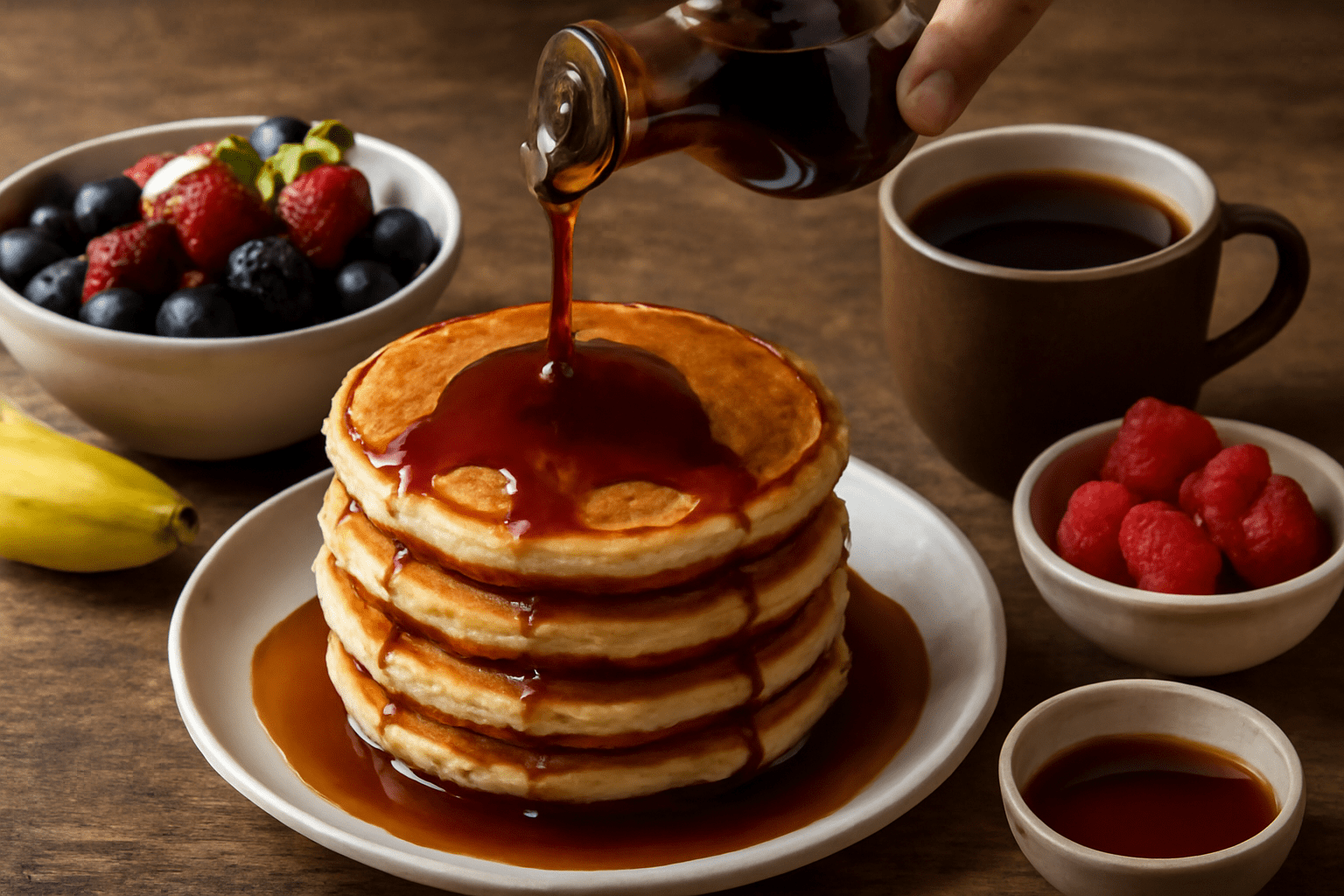
🏠 Storing Your Hickory Syrup for Maximum Freshness 🏠
Proper storage ensures your syrup remains flavorful and lasts as long as possible. Follow these steps to keep your hickory syrup fresh:
- Cool the Syrup Before Storing: 🧊 After bottling, let your syrup cool down to room temperature. This helps avoid any condensation that could form inside the jars and potentially spoil the syrup. 🍯
- Store in a Cool, Dark Place: 🌞🚫 Once cooled, store your syrup in a cool, dark location like a pantry or cupboard. Proper storage away from direct sunlight and heat will help preserve the syrup’s flavor and prevent it from deteriorating. 🌿
- Refrigeration for Longer Shelf Life: ❄️ While unopened jars can last for a long time at room temperature (up to 1 year), once opened, it’s best to refrigerate your syrup to maintain freshness. Refrigeration slows the growth of mold or fermentation, which can sometimes develop in homemade syrups. 🧑🍳
- Freezing for Extra Storage: 🍨 If you want to store your syrup for an extended period, you can also freeze it. Just make sure to leave a little room at the top of the jar for expansion. Freezing will preserve the syrup’s flavor for up to a year. ❄️
- Signs of Spoilage: 🛑 If your syrup develops mold, changes in color, or has an off smell, discard it. This is rare, especially with proper storage, but it’s always good to check before using. 👀
🍴 How to Use Hickory Syrup 🍴
Now that you have a jar of delicious homemade hickory syrup, it’s time to get creative! Hickory syrup has a rich, smoky flavor that adds depth to both sweet and savory dishes. Here are some popular ways to use it:
- On Pancakes or Waffles: 🥞 The classic choice! Pour your hickory syrup over pancakes, waffles, or French toast for a smoky twist on your breakfast favorites. 🍽️
- In Coffee and Tea: ☕🍯 Try drizzling hickory syrup into your morning coffee or tea for a rich, unique flavor. It adds a sweet, caramel-like depth to your drink! 🌞
- As a Glaze for Meats: 🍖 Hickory syrup makes a fantastic glaze for grilled meats, particularly pork, chicken, or ham. Its smoky flavor complements the savory richness of the meat. Brush it on during the final stages of cooking for a flavorful finish. 🍗
- In Salad Dressings: 🥗 Use hickory syrup in salad dressings to balance out tangy vinaigrettes with a touch of sweetness. Combine it with olive oil, mustard, balsamic vinegar, and a pinch of salt for a simple and delicious dressing. 🌿
- As a Marinade: 🍗 The smoky sweetness of hickory syrup also works well in marinades. Mix it with soy sauce, garlic, and some spices for a savory-sweet marinade for meats or vegetables. 🧄
- In Baking: 🍪 Add hickory syrup to baked goods like cakes, muffins, or cookies. It gives a subtle smoky flavor that pairs beautifully with chocolate or nuts. 🥮
- In Cocktails: 🍸 Mix a spoonful of hickory syrup into your favorite cocktail for a unique, smoky sweetness. Try it with bourbon or whiskey-based drinks for a delightful twist. 🥃
💡 Creative Uses for Hickory Syrup 💡
Beyond the traditional uses, hickory syrup can inspire some creative culinary experiments. Here are a few unique ways to incorporate hickory syrup into your meals:
- Drizzle Over Roasted Vegetables: 🥔 Add a touch of syrup to roasted sweet potatoes, carrots, or brussels sprouts for a sweet and smoky glaze that enhances their natural flavors. 🌿
- As an Ice Cream Topping: 🍦 Use hickory syrup as a decadent topping for vanilla or caramel ice cream. The contrast between the cold, creamy texture and the syrup’s warmth creates a wonderful treat. 🍨
- Mix into Yogurt: 🥣 Stir a little hickory syrup into Greek yogurt for a rich, smoky-sweet breakfast or snack. Top with nuts or granola for extra texture. 🥜
🍯✨ Common Problems and Troubleshooting ✨🍯
While tapping hickory trees for syrup is a rewarding experience, it’s not always a smooth process. Whether you’re a beginner or an experienced syrup maker, you may encounter a few bumps along the way. Don’t worry, though—most problems have simple solutions! In this section, we’ll cover the most common issues you might face during the tapping, harvesting, or syrup-making process and how to troubleshoot them. 🛠️👇

🏞️ Problem 1: Low Sap Flow 🏞️
One of the most common issues is low sap flow, especially with hickory trees, which generally produce sap at a slower rate than maples.
- Possible Causes:
- Incorrect weather conditions: Sap flow is heavily dependent on temperature. You need freezing nights and warm days for the sap to flow effectively. 🌡️
- Tree health: If your tree is stressed, diseased, or damaged, it might not produce as much sap. 🌱
- Tapping too early or too late: If you tap your trees too early in the season or too late, sap flow can be minimal. ⏰
- Solutions:
- Wait for the right weather conditions (i.e., freeze-thaw cycles). 🌞❄️
- If you suspect poor tree health, consult an expert or forestry professional to evaluate your trees before tapping them. 🌳
- Timing is everything: Tap during the late winter to early spring when temperatures fluctuate between freezing and above-freezing during the day. 🌨️
🌿 Problem 2: Sap Turning Sour or Fermenting 🌿
Sap turning sour or fermenting can happen when it’s not stored properly or when it’s left for too long.
- Possible Causes:
- Inadequate storage: Sap needs to be cooled down quickly and stored in a clean, cold place to prevent bacteria and fermentation. 🧊
- Extended storage time: Fresh sap has a short shelf life, typically 3-5 days if not refrigerated or frozen. 🗓️
- Solutions:
- Store sap in cool, clean containers and refrigerate or freeze it as soon as possible. ❄️
- Boil down sap promptly after collection to reduce spoilage risk. 🍯
- If your sap has already started fermenting, unfortunately, it’s usually not salvageable. To avoid this, check your sap regularly. 👀
🔥 Problem 3: Boiling the Sap Takes Too Long 🔥
Boiling sap can be a time-consuming process, especially with hickory sap, which requires even more reduction due to its low sugar content.
- Possible Causes:
- Not enough surface area: If you’re using a pot that’s too small, you might not have enough surface area to allow for efficient evaporation. 🍲
- Low heat: Using too low of a heat source can slow down the evaporation process. This is common when boiling indoors with small stovetops. 🏠🔥
- Solutions:
- Use a wider pot or a large pan to increase the surface area and speed up evaporation. 🍳
- If you’re boiling a large amount of sap, consider using an outdoor burner or propane stove. It will provide the high heat needed for faster evaporation. 🌞🔥
- Be patient, but if the boiling process is taking too long, you might want to switch to batch boiling (boil smaller amounts at a time) to make things more manageable. 💨
🍂 Problem 4: Cloudy or Off-Tasting Syrup 🍂
If your syrup has an off taste, strange color, or a cloudy appearance, there’s a good chance something went wrong during the boiling or filtering process.
- Possible Causes:
- Sugar sand: During the boiling process, tiny mineral particles known as sugar sand can form. These can cause the syrup to appear cloudy or gritty. 🧂
- Overboiling: Boiling the sap too long or at too high of a heat can lead to caramelization, resulting in an off-flavor. 🍯
- Contaminants: If your containers, tools, or the sap itself became contaminated with dirt or bacteria, it can affect the syrup’s taste. 🚫
- Solutions:
- Filter well: Use a fine mesh strainer or cheesecloth to strain out sugar sand and other particles while boiling. 🧋
- Avoid overboiling: When the syrup reaches its final consistency, remove it from heat promptly to avoid burning or altering its flavor. ⏱️
- Ensure clean equipment: Always clean your containers, utensils, and equipment before and after each use to avoid contamination. 🧴
🌬️ Problem 5: Syrup Crystallizing After Bottling 🌬️
If your syrup crystallizes after being bottled, you may find it difficult to use or store.
- Possible Causes:
- Insufficient boiling: Not boiling the sap down enough can result in syrup with too much residual water content, which leads to crystallization. 💧
- Incorrect temperature during bottling: If the syrup is too cool when you bottle it, sugar crystals can form as it cools further. 🧊
- Solutions:
- Ensure your syrup has reached the proper final temperature (7.1°F above the boiling point of water). A thermometer is essential. 🌡️
- Reheat the syrup to the correct temperature if crystallization occurs. This will dissolve the sugar crystals and restore the syrup to a usable consistency. 🔥
🧴 Problem 6: Thin or Watery Syrup 🧴
If your syrup is too thin or watery, it’s a sign that it wasn’t boiled down enough during the process.
- Possible Causes:
- Underboiling: Not reducing the sap enough will leave you with syrup that is too watery. 💦
- Incorrect sugar content: Sometimes, sap from certain trees (even hickories) might have a lower sugar content, making it harder to achieve the proper thickness. 🌳
- Solutions:
- Reboil the syrup to thicken it. Bring it back to a boil and monitor the temperature carefully. 🍯
- Concentrate your sap: If you suspect low sugar content, try boiling the sap down in smaller batches and keep a close eye on consistency. 🔥
🏁 Common Problems in Making Hickory Syrup 🏁
Common problems when making hickory syrup include low sap flow, sap turning sour, slow boiling, cloudy syrup, crystallization, or watery syrup. Solutions include using proper storage for sap, adjusting your boiling process (wider pots, higher heat), filtering out sugar sand, ensuring proper boiling times, and reheating crystallized syrup to restore consistency. 🍯
🌳 Troubleshooting Common Hickory Syrup Issues 🌳
While tapping and making hickory syrup may present some challenges, most issues can be resolved with a little patience and the right approach. Whether it’s a slow sap flow, a lengthy boiling process, or cloudy syrup, understanding the common problems—and knowing how to troubleshoot them—will help you make your syrup-making experience smoother and more enjoyable. 🌿
Remember, syrup-making is as much about the process as it is about the result, so don’t get discouraged by setbacks. With practice and persistence, you’ll be able to tackle these issues and enjoy the sweet rewards of your efforts! 🍯
🍯✨ Final Thoughts ✨🍯
Making hickory syrup is more than just a sweet treat—it’s a labor of love and a way to connect with nature and tradition. Whether you’re tapping your first tree or you’re a seasoned syrup maker, this guide has hopefully provided you with the knowledge and tools to succeed.
While there may be challenges along the way—like low sap flow or slow boiling—remember that every step brings you closer to that rich, smoky syrup that can elevate any dish or drink. It’s about learning, experimenting, and enjoying the journey!

Key Takeaways:
- Patience is key: From tapping trees to boiling sap, making hickory syrup requires time and attention. The end result is well worth the wait.
- Proper storage and handling: Keep your syrup fresh and usable by following best practices for storage. Refrigeration and proper sealing can extend its shelf life for up to a year!
- Creative uses: Don’t be afraid to get creative with your syrup! From pancakes to cocktails to glazes and marinades, there are endless ways to enjoy this unique flavor. 🍹🍖
We hope this guide has inspired you to dive into the world of hickory syrup making, whether you’re trying it for the first time or perfecting your craft. Now, go ahead and make your very own batch of delicious homemade syrup—and enjoy the sweet rewards! 🍯🌿
Happy tapping and syrup-making! 😄
Frequently Asked Questions (FAQ)
Can you tap hickory trees for syrup?
Yes, you can tap hickory trees for syrup, just like you would with maple trees. While hickory sap has a lower sugar content than maple sap (1-2%), it still can be boiled down into a delicious, smoky syrup. The process takes longer, but the result is a unique syrup with a distinct flavor profile.
When is the best time to tap hickory trees?
The best time to tap hickory trees is during late winter to early spring, typically from February to April. You need freeze-thaw cycles (freezing nights and warm days) for the sap to flow properly. Monitor the weather for temperature fluctuations to maximize sap production.
How much sap do you need to make hickory syrup?
To make 1 gallon of hickory syrup, you’ll need about 40-50 gallons of sap. This is because hickory sap has a lower sugar content compared to maple sap. It requires more sap to produce a comparable amount of syrup.
What equipment do I need to make hickory syrup?
You’ll need the following equipment to make hickory syrup:
- A tapping drill and spiles to insert into the tree
- Buckets or sap bags to collect the sap
- A large boiling pot or pan
- A thermometer to measure the syrup’s temperature
- Strainers or cheesecloth to filter out debris
Sterilized jars or bottles to store the syrup after boiling
How do I know when the hickory syrup is ready?
Hickory syrup is ready when it reaches 7.1°F above the boiling point of water, typically around 219°F (104°C) at sea level. You can also test its consistency by dropping a bit of syrup on a cold plate; it should thicken and form a syrupy consistency once it cools.
Why is my hickory syrup cloudy or gritty?
Cloudy or gritty syrup usually contains sugar sand, which are mineral deposits from the sap. This can happen if the sap wasn’t filtered properly during boiling. To fix this, strain the syrup through cheesecloth or a fine mesh strainer to remove impurities.
How should I store hickory syrup?
Store your hickory syrup in a cool, dark place like a pantry or cupboard. Once opened, refrigerate it to preserve freshness. If you want to store it for a long time, you can freeze the syrup in airtight containers for up to a year.
Can I use hickory syrup in cooking and baking?
Absolutely! Hickory syrup has a rich, smoky flavor that works well in both sweet and savory dishes. Use it on pancakes, waffles, or ice cream, or try it as a glaze for meats or in salad dressings and baking for added depth of flavor.
